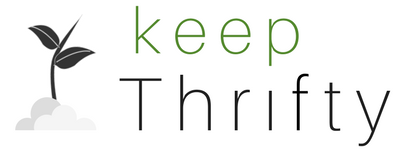
When we started this blog, we were debt-free other than our mortgage, which stood at $110,000. A big part of our focus early on was on achieving debt freedom. We viewed it as an intermediate step to financial independence and eagerly awaited the freeing feeling we’d have once we didn’t owe anything to anyone.
Last summer, we sold our house and moved into an apartment. We used the proceeds to pay off our mortgage and fund our one-year mini-retirement (which just recently turned into two years).
With this move, we’d achieved the thing we’d been thinking about since the day we’d bought our house, nearly ten years earlier. We were 100% debt-free!
We’d imagined the world of debt freedom to be a magical carefree place. So, we waited for the feeling of joy, excitement, relief, and freedom to come.
Only, that feeling never came.
There’s Still a Line-Item
We weren’t paying interest, but the fact that we no longer owed any to anyone just didn’t do that much for us.
It didn’t take long to figure out why our newfound debt freedom wasn’t a life-changing event.
When we compared our monthly budget for life in our house to our budget in an apartment, not much had changed.
We went from making a $936.55 a month mortgage payment (not counting the prepayments we were making on top) to making a $975 a month rent payment.
If you factor in property taxes and maintenance, our housing costs went down quite a bit, but we’re still paying something. And for the foreseeable future, that won’t change.
The thing about our debt freedom that we had been so excited about wasn’t about the end of paying interest. It was about the end of paying for housing.
The Magic of Payment Freedom
“Debt-free” is a pretty ambiguous term. It doesn’t give insight into the amount of expense you have tied up in monthly obligations. (Tweet this )
As an example, you could be “debt free”, but still pay $2500 a month in rent and have $1000 a month in car lease payments.
If I knew that I had those line-items on my budget for the rest of my life, I’d be wearing a really big frowny-face all the time.
So, if debt-freedom wasn’t the panacea, what were we really looking forward to?
The real excitement we had for paying off our mortgage was about eliminating a monthly expense. Sure, we’d have to continue to pay property tax and maintenance at various times throughout the year, but having months where our “shelter” bill showed up as $0.00 sounded magical.
As Jaime and I reflected on this, we realized what we were really after needed a new name - Payment Freedom.
Payment Freedom is the freedom you feel from the complete elimination of a line-item in your budget (Tweet this )
No longer does that item drag down your ability to save month-to-month. And no longer do you have to save up to fund that line-item in retirement.
Pathways to Payment Freedom
Sometimes debt freedom and payment freedom come at the same time - like when you finish paying off a student loan or make the last payment on a mortgage or car that you still own.
But paying off a loan isn’t the only pathway to Payment Freedom, you can get there by eliminating the expense altogether:
As an example, consider cuting the cord. You’ll not only eliminate your $50/month cable bill, but you’ll also reduce your retirement savings target by $15,000.
Another way to achieve payment freedom is to find a sustainable passive source of funds to cover the expense altogether. Examples include:
- If you have a rental property that generates $1,000 a month in profit, you could consider that property as the pathway to “Grocery Payment Freedom” for a $1,000/month grocery bill.
- Your retirement investments of $120,000 would generate $4,800 a year using the 4% safe withdrawal rate. That’s $400 per month of expenses that your retirement investments cover!
Financial Independence as 100% Payment Freedom
In the end, the reason we were excited about debt freedom wasn’t because it was “debt”, it was because we were increasing our percentage of payment freedom.
Looking at it from this perspective, you can view Financial Independence as achieving 100% payment freedom.
The calculator below lets you see what percent “payment freedom” coverage you have based on passive income sources and “safe” money generated from retirement assets. By plugging in the numbers, you can see how much of your retirement expenses you’ve got covered.
The awesome part here is that you can easily see the factors you can change to improve your percentage:
- Increase your investments by contributing more
- Reduce your expected expenses by paying off debt (and keeping the asset if there is one), eliminating unnecessary expenses, and optimizing your spending on the things you can’t eliminate (like food)
- Improve your expected investment return rate by choosing investments with lower fees (such as index funds)
- Increase your safe withdrawal rate by keeping backup plans in mind - like a part-time job
Our Progress
Currently, our hypothetical payment freedom coverage is 16.1%.
We plan to get back into home ownership (and pay off our mortgage quickly), so we should see some a big jump in our progress once we get there. In addition, we’ll keep contributing to our retirement accounts, chipping away at our percentage over time.
Along the way, we’ll continue to examine our expenses to see what we can eliminate. Every little bit counts in getting us to that magical 100% mark!
Where are you on the payment freedom gauge? What steps are you working on to bump that number up?
